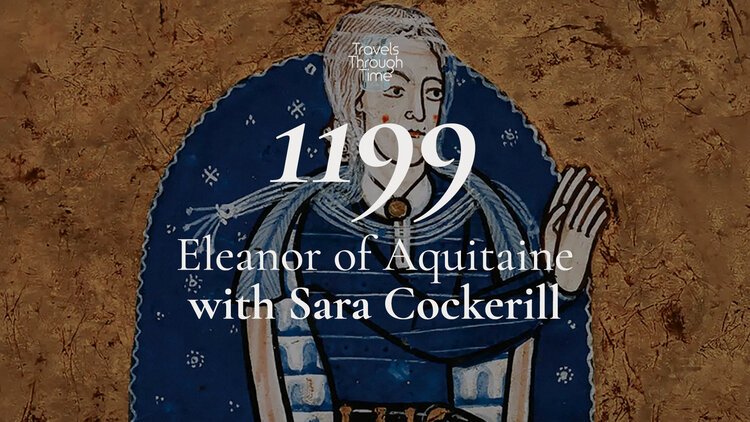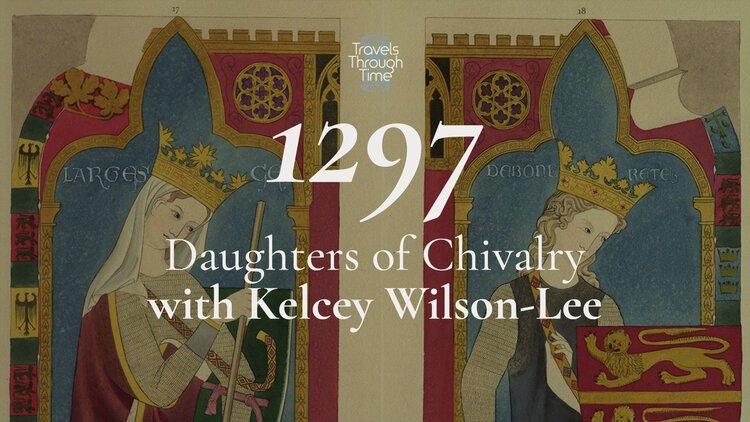A History of the Castle: John Goodall (1217)
John Goodall, author of The Castle: A History
From the monumental ruins of strongholds like Conwy and Dover to the fantastical turrets of Hogwarts, castles are an important element in our vision of the past. They played a vital role in history, as centres of defence and political power, the physical foundation of royal and noble authority. When walking around the draughty ruins today it’s difficult to imagine how they would have been centres of luxury, comfort and plenty in the medieval period.
*** [About our format] ***
This week, we are travelling through time with the acclaimed architectural historian John Goodall, whose life-long passion for medieval architecture of all shapes and sizes began while he was a student at Durham University. His digs were inside the city castle, making him part of a long line of inhabitants stretching back all the way back to the 11th century. His new book The Castle: A History tells the stories of these influential buildings through riveting snapshots at various moments in their history.
In this episode John takes us to visit several important castles in the year 1217, a turbulent moment in English history when rebel barons had asked the French king Louis for help in their struggle against the notoriously bad King John. In the ensuing civil war, castles played a vital role as centres of defence – so much so that John demanded his knights to destroy them rather than see them falling into French hands. Fortunately for posterity, they ignored his orders.
John Goodall is the architectural editor of Country Life. He is responsible for writing and commissioning the celebrated series of architectural features published in the magazine every week. John has been involved in various television series on history and architecture and his books include God's House at Ewelme (2001), The English Castle (2011), Parish Church Treasures (2015), English House Style (2019) and The Castle. A History (2022).
*** Listen to the Podcast ***
Show Notes
Scene One: 20 May 1217. Lincoln Henry III’s forces brutally sack the city of Lincoln in the aftermath of the battle because the citizens sided with Louis and the French, an event known sardonically as ‘Lincoln Fair’.
Scene Two: 24 August 1217. The Battle of Sandwich, a decisive moment in the war when the English royalist army defeats Louis and pushes the French back across the Channel.
Scene Three: 12 September 1217. On an island on the Thames near Kingston, the Treaty of Lambeth is signed by both sides in which Louis formally gives up his claim to the English throne, wearing just his underwear and a cloak.
Memento: The coronet Henry III wore at his coronation aged 9, made of his mother’s jewels especially for the event.
People/Social
Presenter: Violet Moller
Guest: John Goodall
Production: Maria Nolan
Podcast partner: Ace Cultural Tours
Follow us on Twitter: @tttpodcast_
Or on Facebook
See where 1217 fits on our Timeline
About John Goodall
John Goodall is the architectural editor of Country Life. He is responsible for writing and commissioning the celebrated series of architectural features published in the magazine every week. John has been involved in various television series on history and architecture and his books include God's House at Ewelme (2001), The English Castle (2011), Parish Church Treasures (2015), English House Style (2019) and The Castle. A History (2022).
Featured Images
Complementary Episodes
A Dazzling Mind and Magna Carta: Professor Giles Gasper (1215)
In this episode we explore the year 1215 in order to understand some of the most significant political, religious and intellectual developments of the medieval period.
Eleanor of Aquitaine, The Matriarch: Sara Cockerill (1199)
Eleanor of Aquitaine was one of the remarkable figures of the High Middle Ages. She was variously an heiress, a crusader, a prisoner, an eminence gris and a fierce protector of her children. It is in this latter role of family matriarch that we view Eleanor in this episode.
Daughters of Chivalry: Kelcey Wilson-Lee (1297)
In this thought-provoking episode of Travels Through Time, historian Kelcey Wilson-Lee takes us to the court of the English King Edward I in 1297 to meet his daughters at a dramatic moment in their lives.














